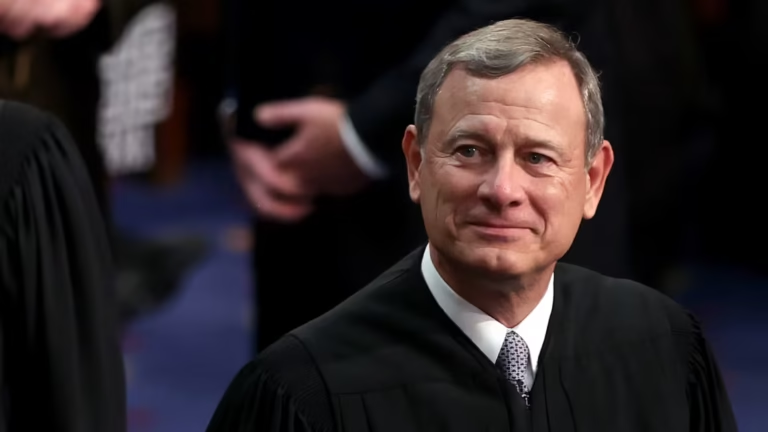Chief Justice John Roberts has been a pivotal figure in the United States Supreme Court since his appointment in 2005. Born on January 27, 1955, in Buffalo, New York, Roberts has shaped American law through his leadership and judicial decisions. His career reflects a commitment to judicial restraint and a focus on maintaining the Court’s institutional integrity.
Roberts’s educational background laid a strong foundation for his legal career. He graduated from Harvard College with a degree in history in 1976 and then attended Harvard Law School, where he earned his law degree in 1979. During his time at law school, Roberts served as managing editor of the Harvard Law Review, an indication of his early legal promise. Following law school, he clerked for Judge Henry Friendly of the U.S. Court of Appeals for the Second Circuit and later for then-Associate Justice William Rehnquist of the Supreme Court. These experiences gave Roberts deep insights into judicial processes at the highest levels.
Before his Supreme Court appointment, Roberts worked in several significant roles within the U.S. government. Early in his career, he served in the Department of Justice’s Office of the Solicitor General and was involved in legal advising during the administration of President George H. W. Bush. He also worked in private legal practice and held positions such as Associate Counsel to the President and Deputy Assistant Attorney General in the Office of Legal Counsel. In 2003, President George W. Bush appointed him to the U.S. Court of Appeals for the District of Columbia Circuit, where he served until his nomination as Chief Justice.
Roberts’s nomination to the Supreme Court came after the death of Chief Justice William Rehnquist. Nominated by President George W. Bush, Roberts was confirmed by the Senate with a vote of 78 to 22, reflecting broad support. Since taking office on September 29, 2005, Roberts has been known for his conservative judicial philosophy combined with a pragmatic approach to decision-making. He often seeks to build consensus among the justices and prefers narrow rulings that preserve the Court’s reputation and stability.
One of Roberts’s most notable moments came in 2012 when the Supreme Court considered the constitutionality of the Affordable Care Act (ACA). Writing for the majority in National Federation of Independent Business v. Sebelius, Roberts upheld key parts of the law, including the individual mandate. He framed the mandate as a tax, allowing it to survive constitutional scrutiny. This decision demonstrated Roberts’s careful balancing of legal principles and real-world consequences, as well as his desire to avoid deepening political divisions.
Throughout his tenure, Roberts has written opinions that protect individual rights but also uphold conservative principles, particularly in areas like federalism and administrative law. He is known to support the authority of the federal government while also emphasizing limits on its power when appropriate. His rulings reflect a respect for precedent, though he does not shy away from revisiting established decisions if he believes they were wrongly decided.
Roberts’s leadership style emphasizes the importance of the Supreme Court as an institution. He often stresses that the Court should avoid partisan battles and maintain public confidence by appearing fair and impartial. This approach sometimes places him in the role of a swing vote, especially in close cases where ideological divides are sharp. His efforts to steer the Court toward moderation have made him a key figure in the balance of power on the bench.
Despite being a conservative appointee, Roberts has occasionally disappointed some conservative critics by siding with the liberal justices in certain rulings. At the same time, progressive observers sometimes see him as a guardian of the Court’s credibility who can limit more extreme legal interpretations. His nuanced positions have sparked debate about his true judicial philosophy, though many agree that Roberts’s pragmatism defines his approach more than rigid ideology.
On a personal level, Roberts maintains a relatively low profile outside his judicial duties. He is married to Jane Sullivan Roberts, and together they have two children. Known for his formal and polished writing style, Roberts avoids public controversies and focuses on his role within the judiciary. His work ethic and dedication to the law have earned him respect from colleagues and legal scholars alike.
Chief Justice John Roberts continues to influence American law and society through his role as the highest-ranking judicial officer in the United States. His tenure highlights the complexities of leading a divided court and the challenges of balancing legal reasoning with broader social and political concerns. As the Supreme Court addresses new and evolving issues, Roberts’s decisions and leadership remain central to the future of U.S. jurisprudence.







